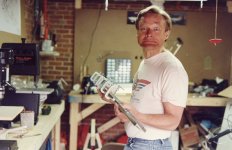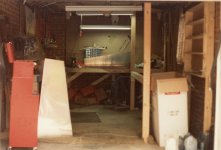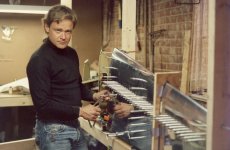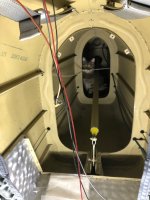TheBoatLife
Member
So that’s where I stand. I received the empennage kit, it’s inventoried, and ready for me to begin. But the primer decision has me anxious.
I’ve read so much about primer and paint that at the moment I feel like it’s overload, and also a decision I should have made before the first part of the kit was even delivered.
I’m starting my build in the basement, just the first parts of the tail, but eventually I will be continuing this build in our single car garage in Connecticut. It’s not ideal but for now it’s what I have available to work with. No insulation, no heat. I feel it’s going to be a challenge to build without a two car heated garage and add to that I really don’t have the space for a paint booth.
I know the minimum required parts to prime are listed in Van’s plans, but i feel like if things were perfect with space and time I’d probably spray primer everything, but it’s not a perfect situation. Any suggestions on how to do more than the minimum but without the paint booth setup?
I feel like I’ve heard the suggestion to just buy the self etching primer rattlecans from the hardware store and just lightly spray the interior edge of parts that have a seam or edge on the exterior.
I know ‘to primer or not’ is an ongoing debate but at the moment I’m just at one of those “what have I gotten myself into” points. And it’s stopping me even right now from going down to the basement and doing Step 1.
I’ve read so much about primer and paint that at the moment I feel like it’s overload, and also a decision I should have made before the first part of the kit was even delivered.
I’m starting my build in the basement, just the first parts of the tail, but eventually I will be continuing this build in our single car garage in Connecticut. It’s not ideal but for now it’s what I have available to work with. No insulation, no heat. I feel it’s going to be a challenge to build without a two car heated garage and add to that I really don’t have the space for a paint booth.
I know the minimum required parts to prime are listed in Van’s plans, but i feel like if things were perfect with space and time I’d probably spray primer everything, but it’s not a perfect situation. Any suggestions on how to do more than the minimum but without the paint booth setup?
I feel like I’ve heard the suggestion to just buy the self etching primer rattlecans from the hardware store and just lightly spray the interior edge of parts that have a seam or edge on the exterior.
I know ‘to primer or not’ is an ongoing debate but at the moment I’m just at one of those “what have I gotten myself into” points. And it’s stopping me even right now from going down to the basement and doing Step 1.








